Much as I enjoy the capability of modern mountain bikes, sometimes it’s good to take it back to the roots.
If you rode a bicycle on dirt 30 years ago, you would almost certainly have been astride a steel frame with rigid forks, and providing you picked your battles, you would probably be having fun. Times have changed, but those early mountain bike designers were definitely onto something.
From the rolling hills of southern England to the new generation of purpose-built flow trails, there are a lot of places where a rigid bike feels right at home. They’re lighter than a hardtail of equivalent spec, they teach you to pick good lines, and when you do manage to clean something mildly technical on one, it’s quite a buzz. So there’s still a place in my affections for a slender frame unencumbered by telescopic twonkery.
Latest Singletrack Merch
Buying and wearing our sustainable merch is another great way to support Singletrack
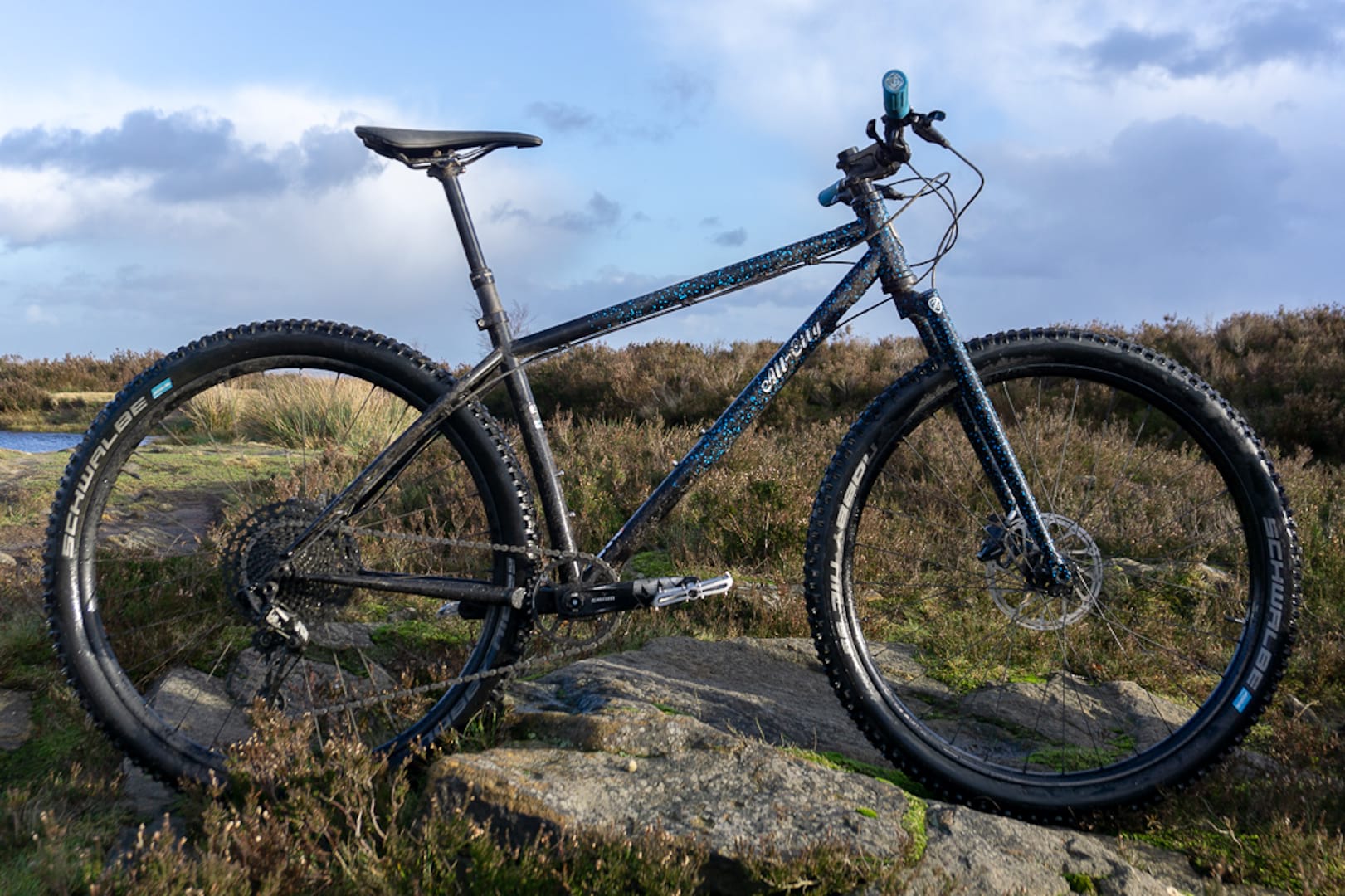
The All City Electric Queen is an attempt to bring those retro bikes into the 21st century, with suspension corrected geometry, ample tyre clearance and much more. In the US, it’s offered as a complete bike, equipped with RockShox Reba forks, but UK distributor Ison is only bringing in the rigid frameset.
Did I want to test one? Hmmmmmmaybe.
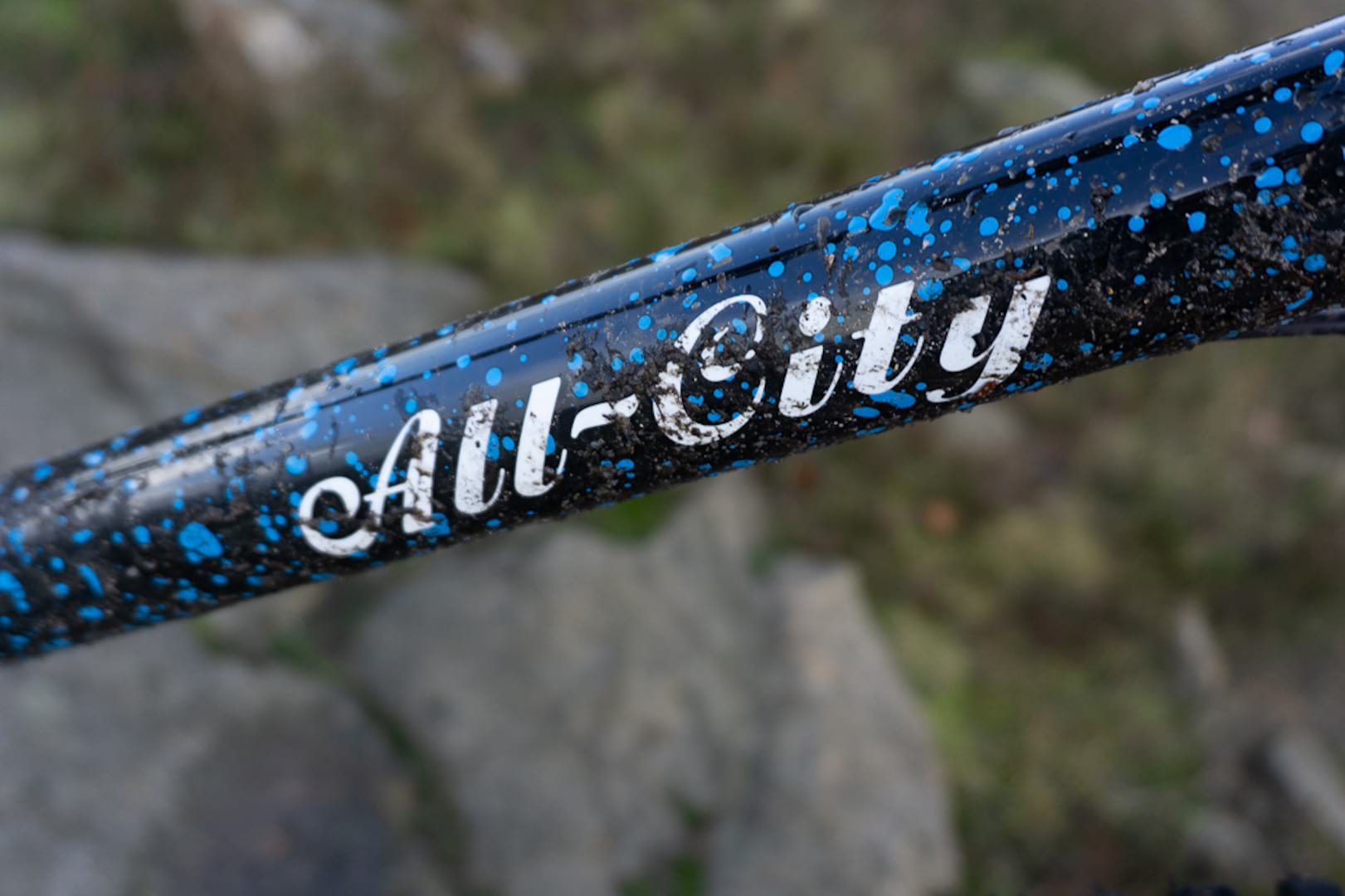
When I clapped eyes on the built-up bike, though, any misgivings over the future integrity of my wrists were set aside. Just the paint finish on the frame is enough to make you want one. The blue splatter is applied in glorious thick blobs that stand off the black base coat, making you want to touch it. It’s retro (I immediately thought of my 1990s GT Timberline) but fresh enough to look modern. Handily for a bike test in the depths of UK winter, it’s also the type of paint job that looks great when it’s muddy.
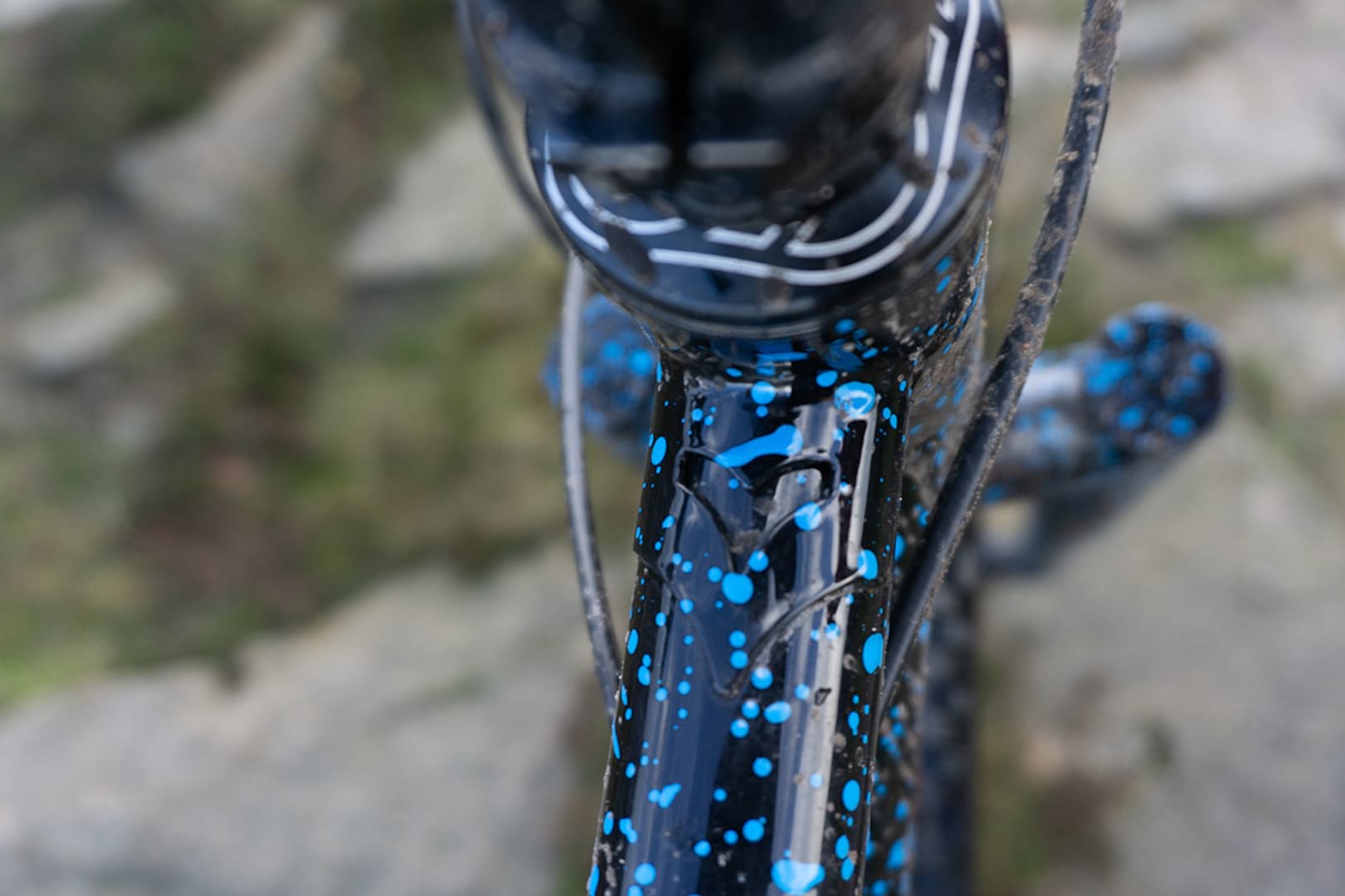
The Bike
Tubing is a mix of double-butted chromoly and is internally ED coated, which should help avoid the bike maintenance moment every steel frame owner dreads, when you try and remove the seatpost only to realise it’s stuck fast.
The fork dropouts and head tube brace sport custom lugwork, and there’s a brushed alloy headbadge, giving the Queen an extra touch of class.
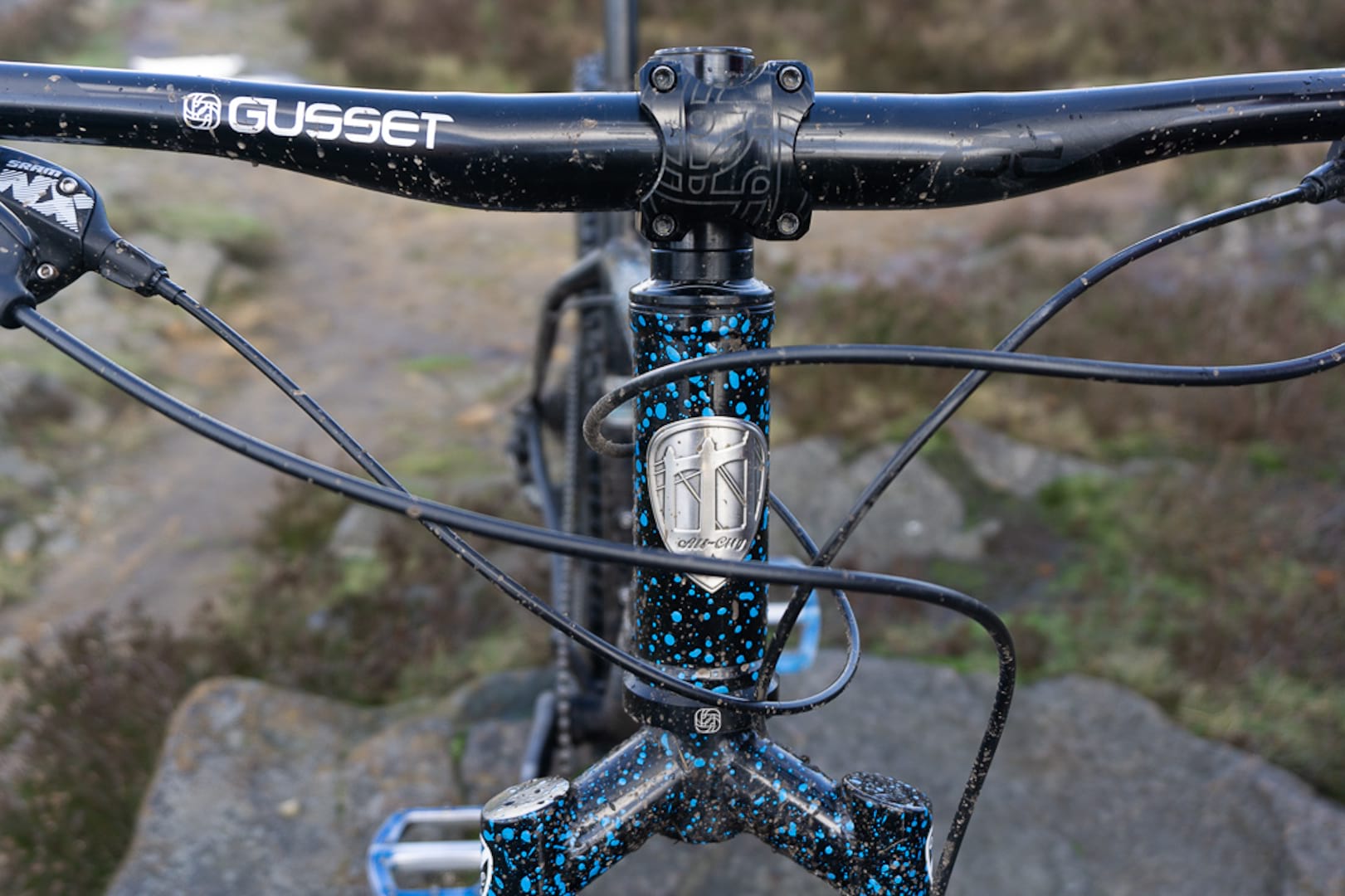
All City Cycles is part of the same parent company as Salsa and Surly, and you can see some healthy cross-pollination between the brands. The curved seatstay bridge will be familiar to anyone who’s ogled a Krampus, while the 15mm through axles even sport Salsa branding.
However the Electric Queen is definitely coming from a slightly different place to its sister brands. While you could use this bike for dirt touring, there are no rack or luggage cage mounts, and for everyday rides, or rough-and-ready bikepacking trips, I’d prefer a slightly more functional paint finish, meaning one that wouldn’t make me cry when I scratched it.
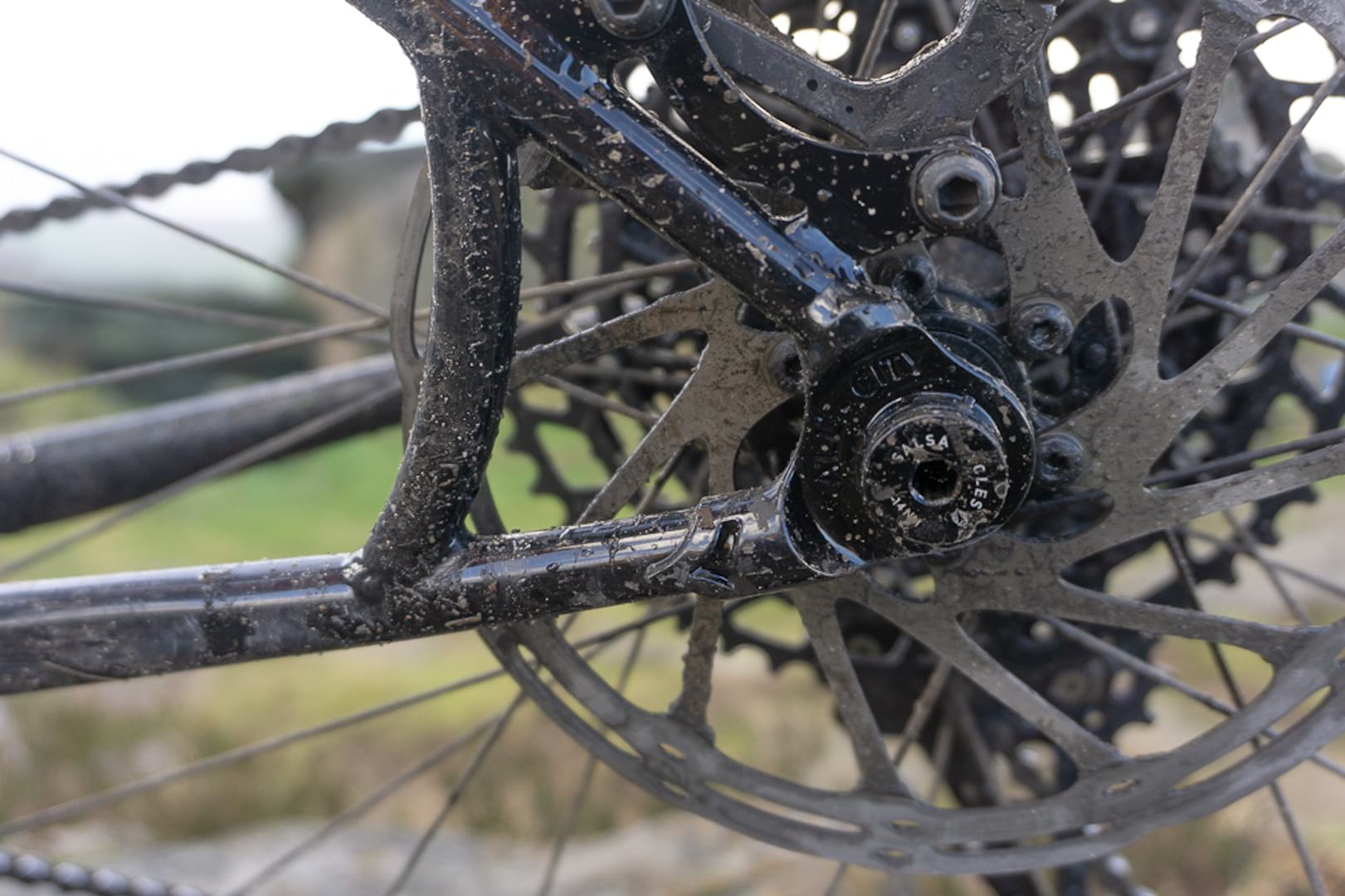
On that note, the paint on our test bike did have a minor blemish on one chainstay, which is possibly why it was released to our tender ministrations. After a few weeks I also noticed the chainstays were starting to scuff up a bit from heel rub. If it was my frame I’d be tempted to slap some helicopter tape on it, although shrouding it in plastic would also feel a bit wrong – like putting a Perspex lid on your antique desk.
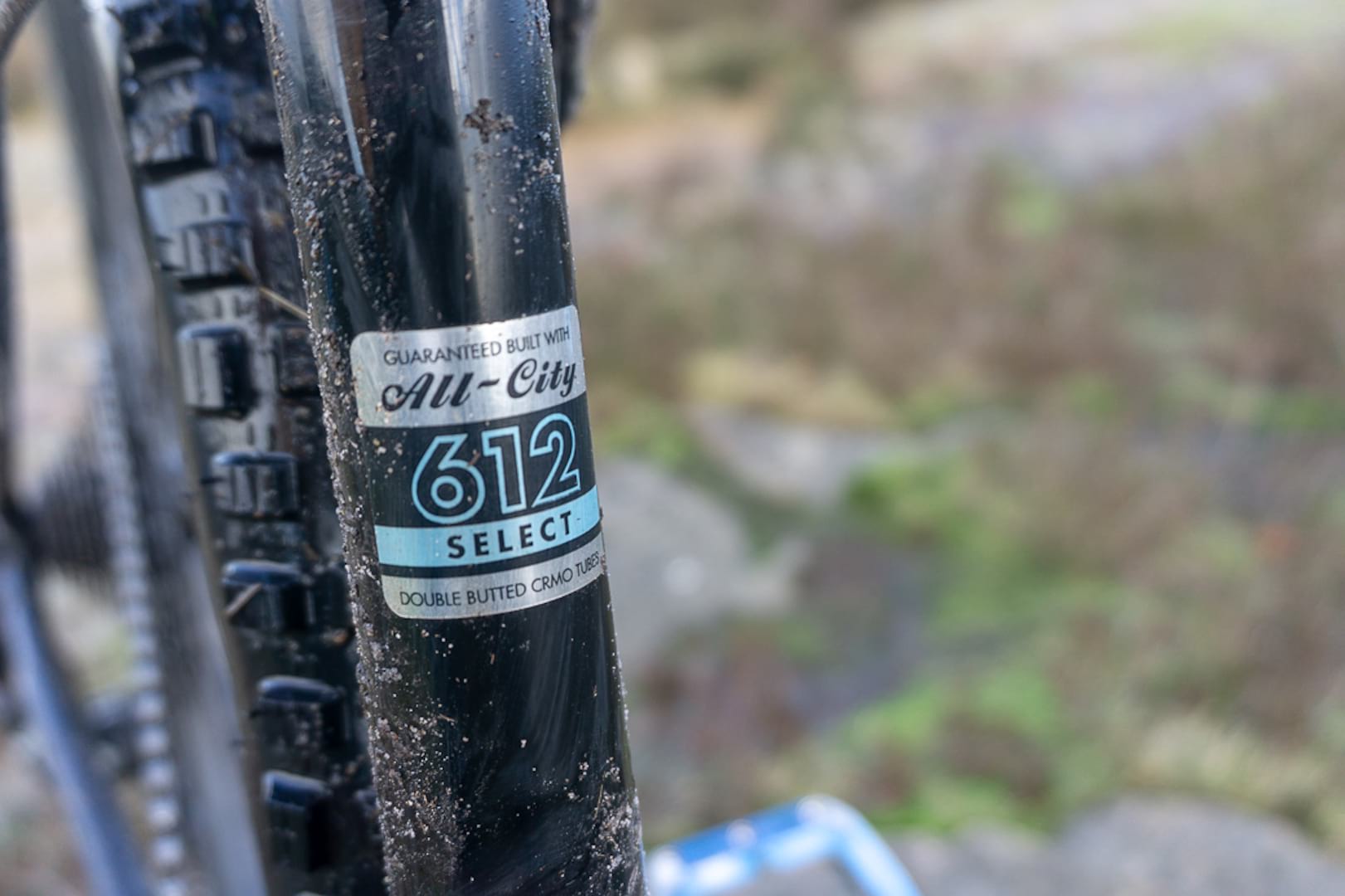
Under the paint job, the Electric Queen is no anachronism. It’s designed around a modern, if not cutting-edge set of numbers, including a relatively roomy top tube, a relaxed 67.7° head angle and a 51mm offset fork. The frame and forks have Boost spacing, the back wheel is tucked in close to the seat tube for livelier handling, and there’s ample tyre clearance in 29er mode, thanks to a fancy chainstay brace. Officially the largest 29er tyre that fits is 2.25in but it’ll take a 2.5in easily, as long as you’re not ploughing through pebbly mud.
The bike is also designed to be run with 27.5+ wheels shod with up to 3.0in tyres, and comes in this guise as a complete bike. It has stealth dropper post routing. While you could potentially run a front mech, there are no cable guides or stops for doing this. This is a thoroughly modern mountain bike.
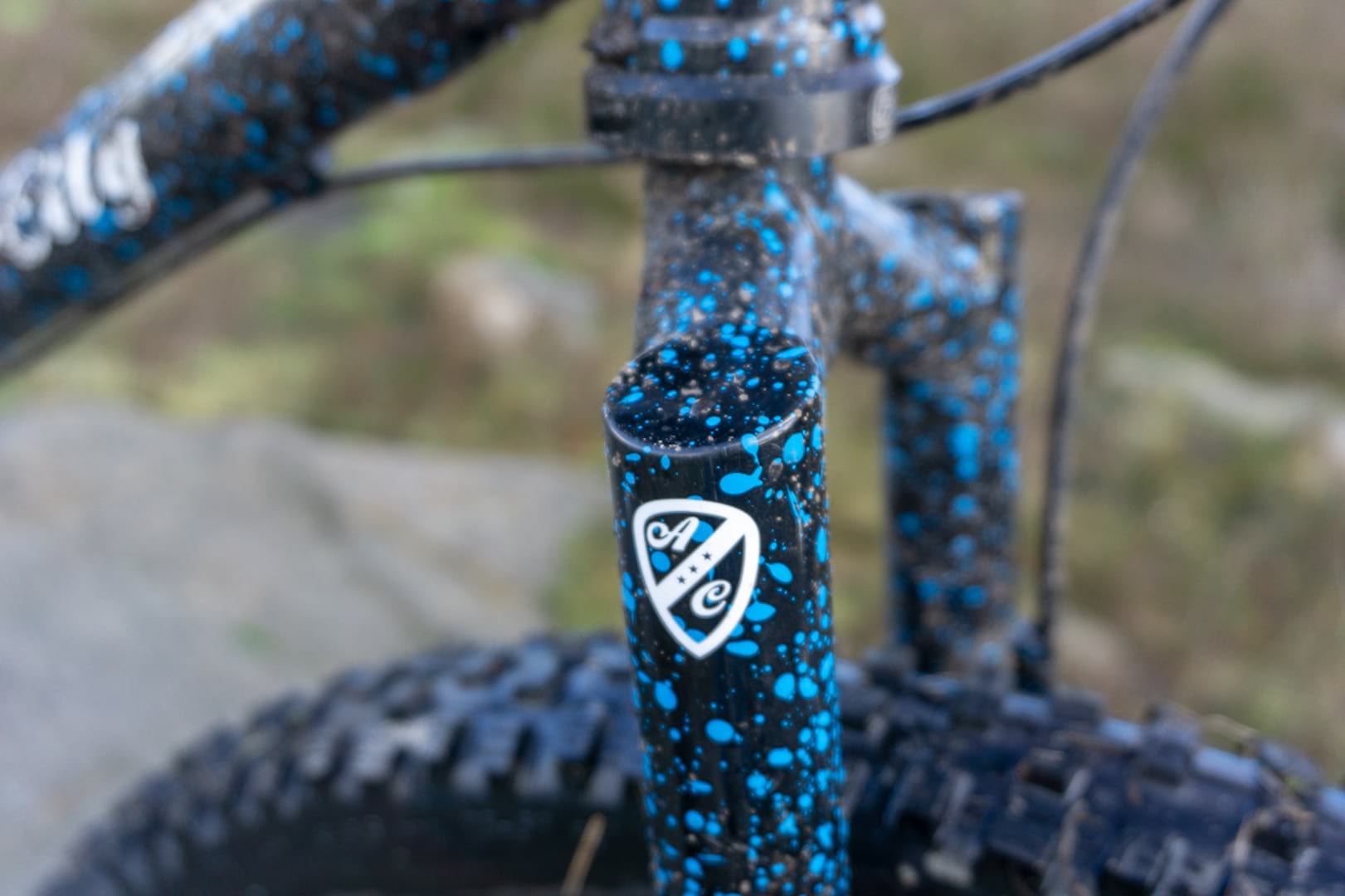
The forks are a thing of loveliness, combining five-part segmented construction with fairly girthy blades, topped off with some subtle lugwork near the 15mm dropouts. Despite the bike’s tapered headtube, the forks have a 1⅛in steerer, which makes for a rather functional appearance as the diameter steps down.
This concession aside, it’s a very pretty frame indeed. There’s some very subtle tube manipulation going on (notably the chainstays), but it’s not incongruous enough to spoil its classic look.
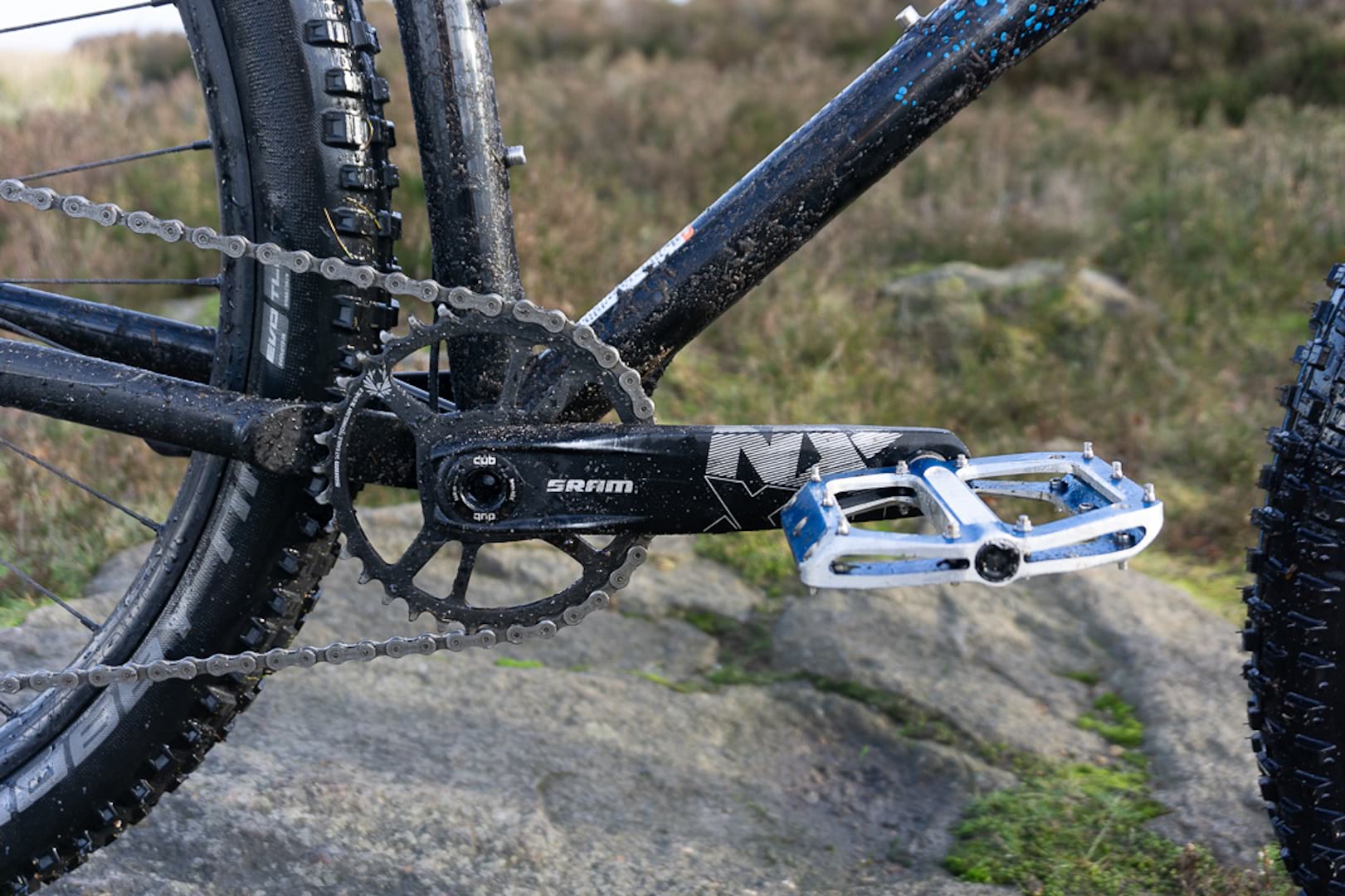
Our test bike was built up for us with a 12-speed SRAM NX Eagle groupset, SRAM brakes and a selection of Ison’s house components, including Halo wheels and finishing kit from the delightfully-named brand Gusset. The massive 800mm bars, 50mm stem and rigid forks combined to give the Queen a big BMX feel, while an internally routed KS dropper post indicated that this bike might be something of a dark horse on the downhills.
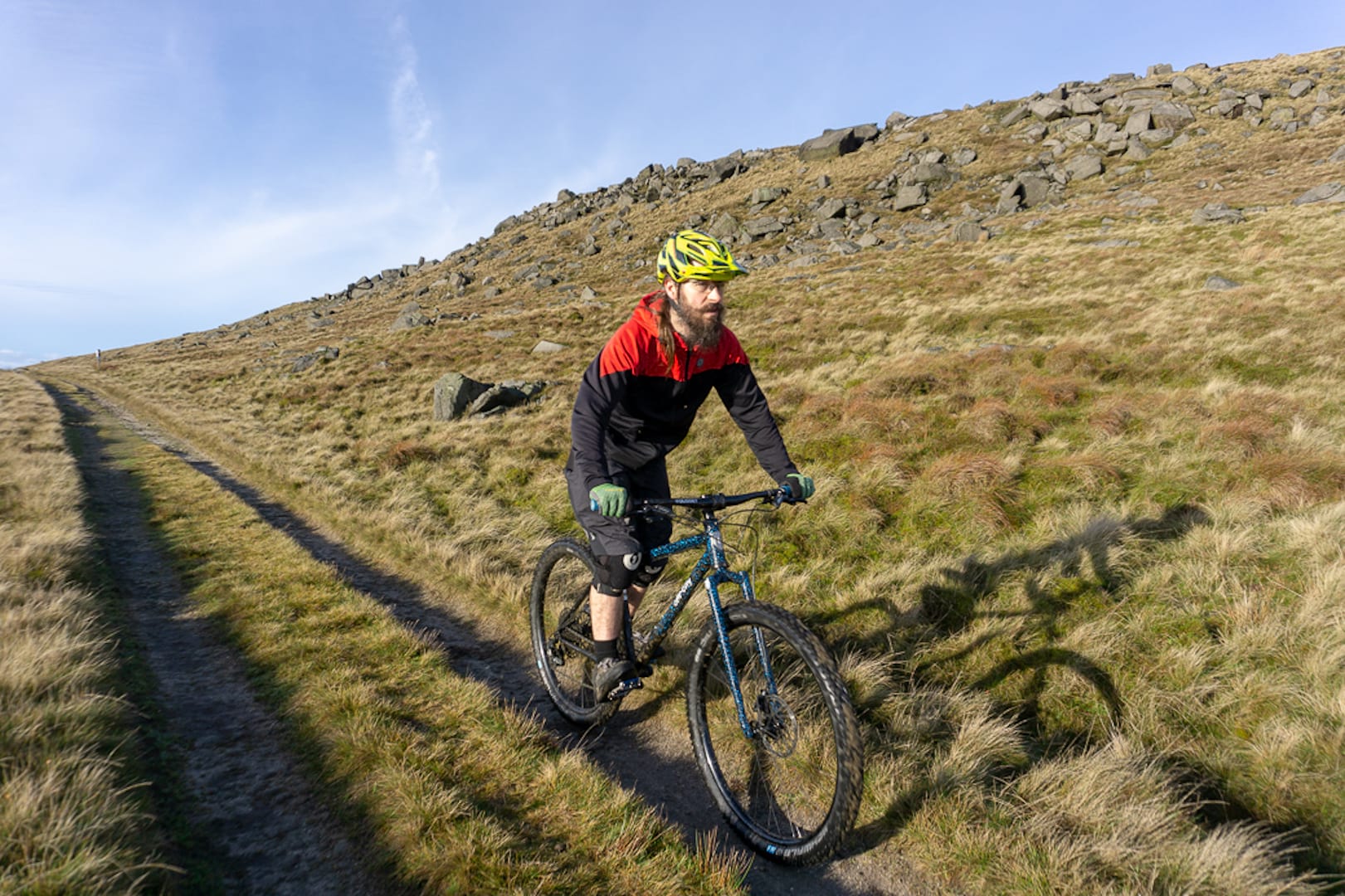
The Ride
Going from a 6in travel full susser back to a rigid was a bit of a learning curve. There is a persistent myth that steel bikes are automatically compliant and forgiving, but the Electric Queen is not that way inclined – it feels aggressive and direct. Even with the skinny steerer, the forks transmitted a lot of what was going on under the front wheel to my hands. Part of this might also have been down to the 35mm bar an stem, but I’ve definitely ridden rigid forks that are kinder on the wrists – albeit few that offer such a degree of stiffness and precision.
The rear triangle of the frame was very stiff too. You certainly knew if you got a line wrong, but it was also responsive and a whole lot of fun. The short chainstays made picking up the front wheel or changing line easy, and the bike felt like it was made to charge nimbly through singletrack. While at times it might have been punishing, it was also playful.
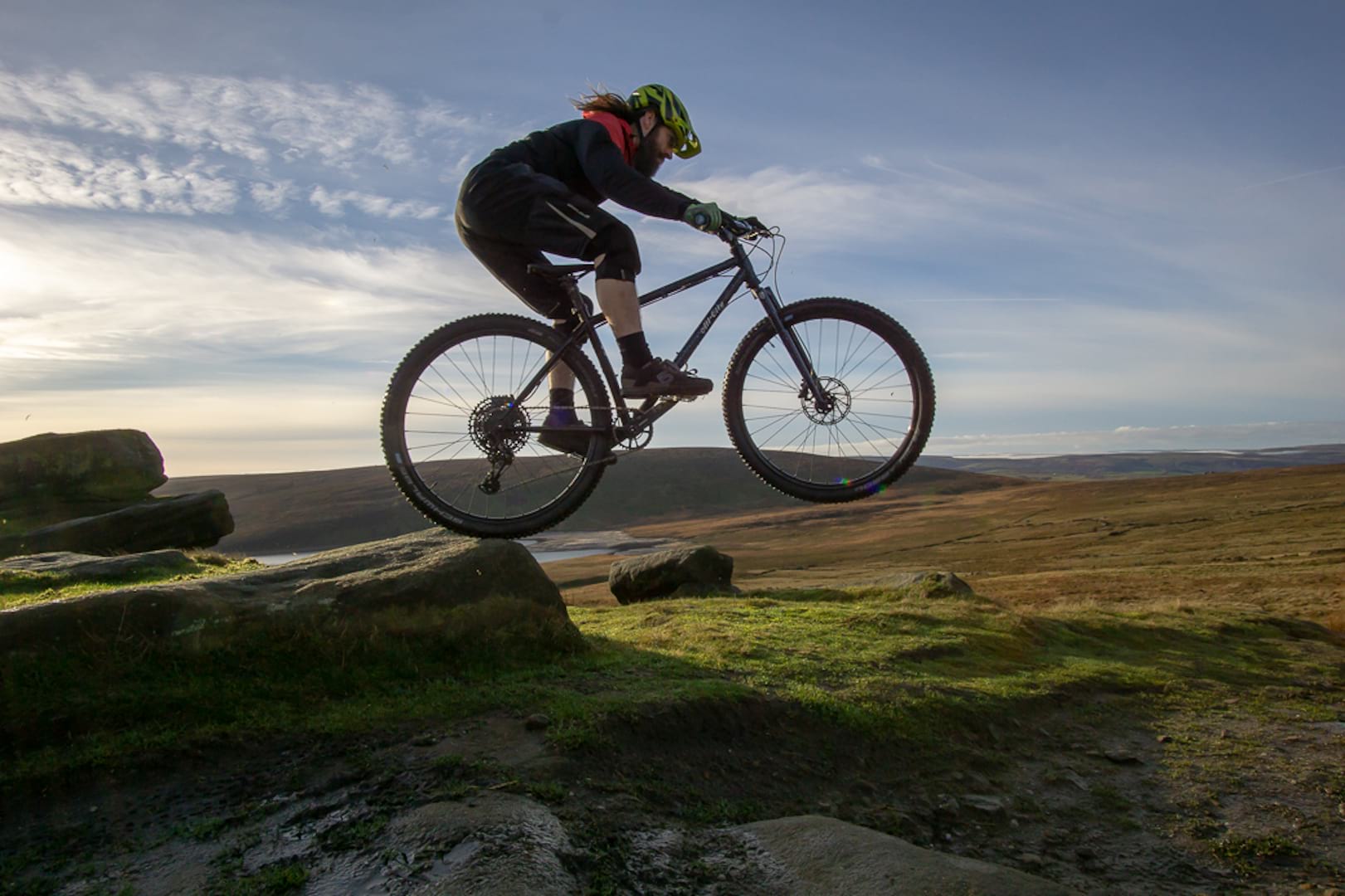
Thanks to the relaxed head angle and dropper post, the Electric Queen was also surprisingly capable downhill, and even steep sketchy trails could be dispatched without drama, albeit at lower speeds than a squishy bike permits. It’s definitely not the lightest frameset out there, but the Queen also loved to climb, losing none of the rider’s energy to flex or twang.
The issues that I did have during the relatively short test period mostly related to the build, rather than the frameset. The SRAM Level TL brakes felt wooden, adjusting the reach caused them to pump up alarmingly, and the stock pads lasted perhaps half a dozen rides.
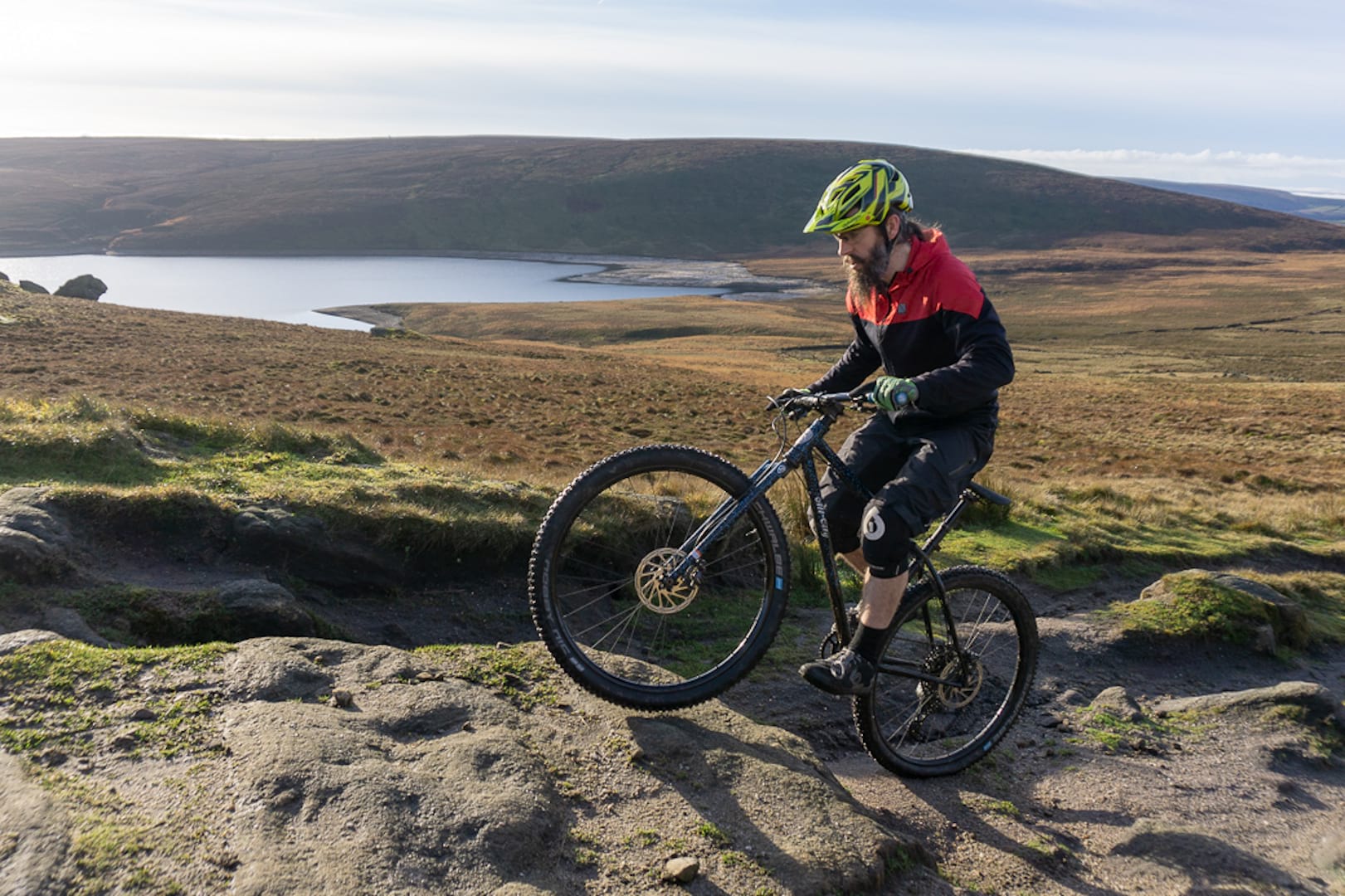
The other problem I had was that the stiffness of the frame and fork, which made the bike so confidence-inspiring, meant that the fragile tyres quickly became an issue. Even though they sported a natty colour-coordinated blue pinstripe, the carcasses of the Schwalbe Nobby Nic Speedgrips were no match for square-edged Pennine rocks, and even at comfortable pressures, the tread didn’t grip brilliantly when things got damp.
Tyres become extra important when they’re the only bit of a bike that’s providing suspension, and I did find myself wondering what the Electric Queen would be like with a set of sturdy Plus rubber instead of the fairly conventional 29er configuration.
The other minus with the Electric Queen is that bikes imported from the US are currently getting clobbered with hefty trade tariffs, so it’s an expensive proposition for a winter hack. Having said that, while I know bikes are made to be used, this one is nice enough that I’d feel quite uncomfortable running it through the grinder of a British winter.
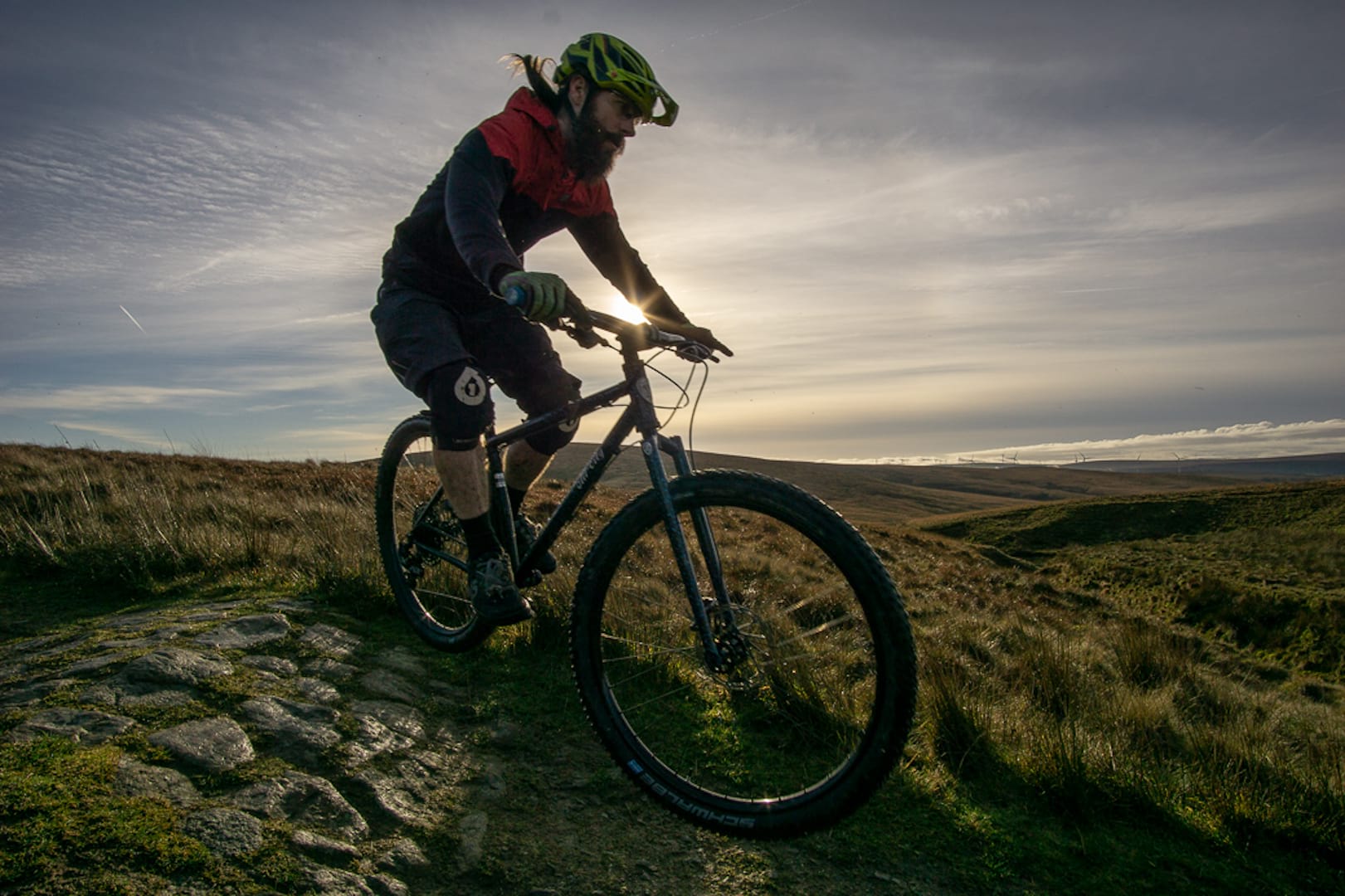
Three Things I Loved
- That paint job – just look at it!
- It’s great to see relatively aggressive geometry on a rigid bike.
- It’s a versatile and future-proof platform.
Three Things That Could Be Improved
- It’s capable but fairly unforgiving.
- There’s no complete bike or frame-only option in the UK – you have to want rigid forks too.
- Import duties land it with a premium price.
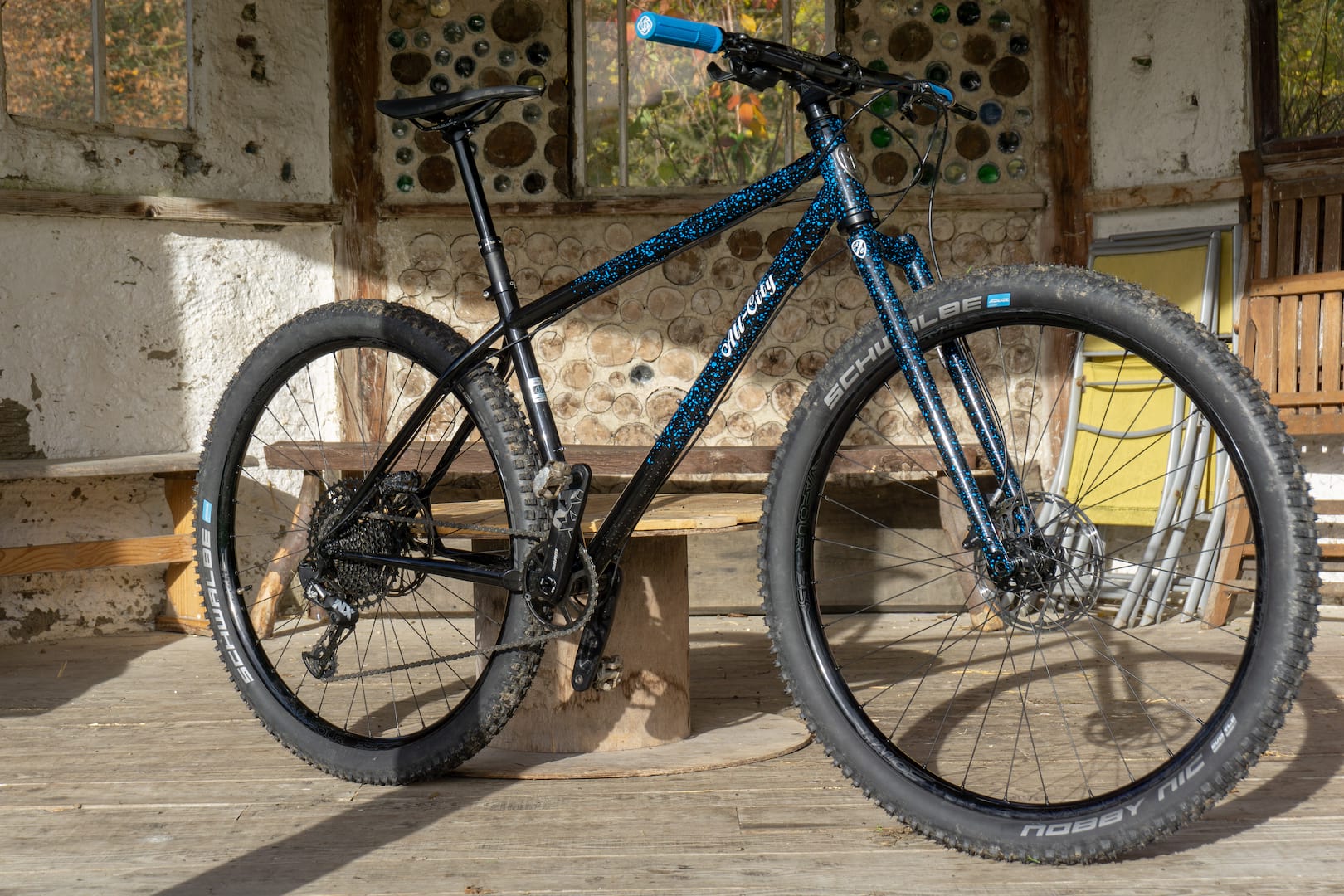
Overall
The Electric Queen is the mountain bike equivalent of the TV series Stranger Things: it’ll either charm you with its rebooted retroness, or make you feel vaguely annoyed at its refusal to innovate.
There are limits to what you can comfortably ride on a set of steel forks, and the overall burliness of the chassis perhaps shows these up more. I also think that had I kept it longer, the novelty might have worn thin.
I did appreciate its unexpected capability though, and I also enjoyed its unashamed showiness – there is a level of detail and finish here that would turn heads at a handmade bike show. But it’s not just a pretty paint job, the Electric Queen is a bike that performs well on the trail too.
All City Electric Queen Specifications (As tested)
- Frame // Double butted 612 Select CroMoly tubing, 29in/27.5+ compatible, 12 x 148mm
- Fork // All City 5-piece segmented CroMoly, 51mm offset, 110mm
- Hubs // Halo Supadrive/MT, 110x15mm front & 148x12mm rear
- Rims // Halo Vapour 35, tubeless ready
- Tyres // Schwalbe Nobby Nic Addix Speedgrip
- Crankset // SRAM NX Eagle
- Rear Mech // SRAM NX Eagle, 12-Speed
- Shifters // SRAM NX Eagle, 12-Speed
- Cassette // SRAM PG1230 Eagle, 11-50t, 12-Speed
- Brakes // SRAM Level TL
- Stem // Gusset S2 AM, 50mm
- Bars // Gusset S2, 35mm Diameter, 800 mm
- Grips // Gusset S2 Lock-On
- Seatpost // KS Eten i
- Saddle // Gusset S2 AM
- Size Tested // Medium
- Sizes Available // X-Small, Small, Medium, Large, X-Large
- Confirmed Weight // 12.7kg (28 lbs)
- RRP // £1,150 (frame and fork)





Is that a wizard riding the bike in the pics?
Nah, just a wandering folk troubadour I found in the Fox and Goose…
Have they re-invented the In-One Inbred 🙂
£1,150 – f&f. Blimey!